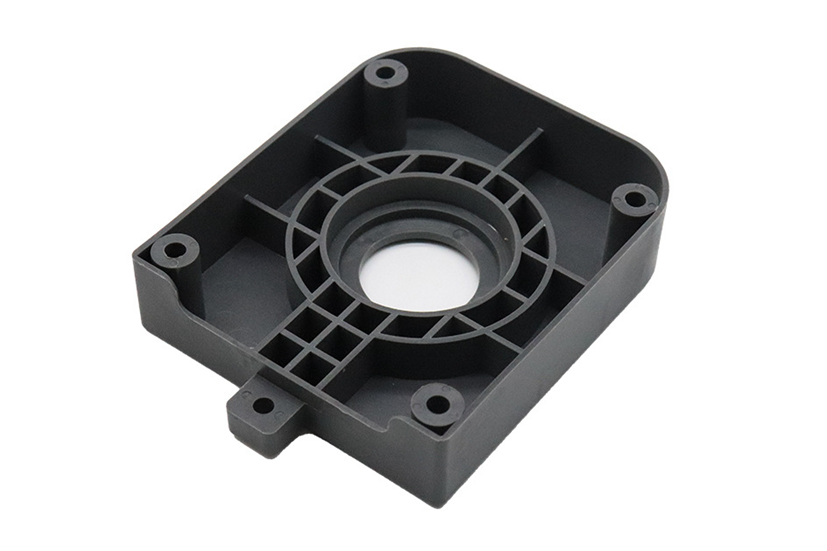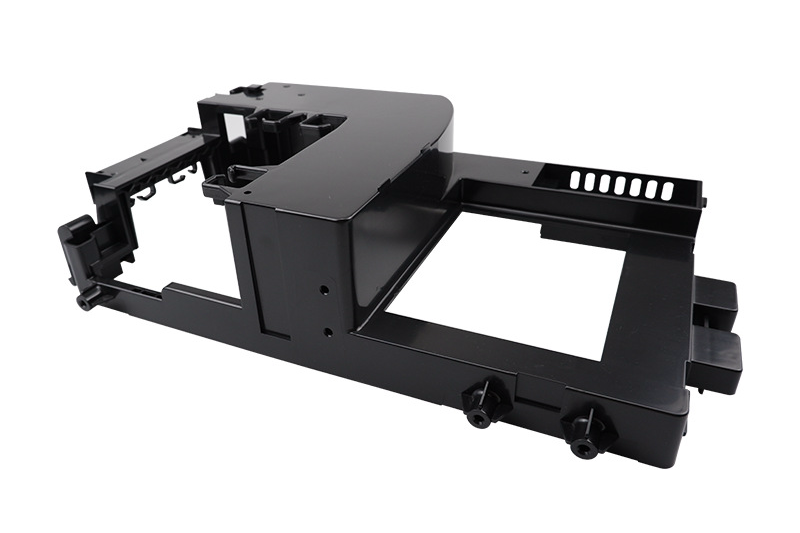
Thermoset Injection Molding Machines - Molding Application - thermoset molding
Author:gly Date: 2024-10-15
Dimensional Stability: HDPE 5000S exhibits low shrinkage (1.5%) and maintains its shape during cooling, contributing to the accurate and consistent production of precision parts.
Mechanical Strength: With a tensile strength of 27 MPa and a flexural strength of 45 MPa, HDPE 6000F offers solid mechanical performance. It's an excellent fit for creating industrial components, agricultural equipment, and structural parts that demand a blend of strength and reliability.
Balanced Impact Resistance: An Izod impact strength of 35 J/m ensures robust resistance to impacts and shocks. This property is ideal for crafting items like safety equipment, consumer goods, and housings for power tools.

Optimized Heat Deflection: With a heat deflection temperature of 85°C, HDPE 5000S is apt for applications with elevated temperatures. It produces kitchenware, automotive components, and products exposed to moderate heat sources.
Balanced Strength and Flexibility: HDPE 5000S combines a commendable tensile strength of 30 MPa with a high elongation of 600%, rendering it suitable for manufacturing durable yet flexible products.
Elevated Heat Deflection: HDPE 6000F's heat deflection temperature of 90°C makes it suitable for applications that face moderate thermal challenges. It is employed in crafting items like automotive interior parts, kitchen utensils, and electrical components that withstand elevated temperatures without deformation.
Superior Impact Strength: With an Izod impact strength of 50 J/m, HDPE 8000F ensures exceptional resilience against impacts and shocks. It finds relevance in creating challenging and durable items like tool cases, industrial bins, and protective equipment.
Moderate Tensile Elongation: HDPE 7000F's tensile elongation of 500% balances flexibility and strength, making it suitable for products requiring a blend of both attributes. This property is advantageous for producing hoses, tubing, and flexible containers.
What is Extrusion Blow Molding? Extrusion blow molding can be described as a type of blow molding in which plastic is melted and extruded into a hollow tube to form a parison (a tube-like piece of plastic with a hole in one end). Thereafter, the parison is captured in a water-cooled metal mold, and the air is blown into the parison, inflating it into the shape of a hollow bottle or container. After cooling down the plastic sufficiently, we can open the mold to eject the part.
Low Shrinkage and Dimensional Accuracy: HDPE 8000F's low shrinkage rate of 0.8% enhances its ability to maintain precise dimensions during cooling.
High-Performance Polymer: HDPE 8000F stands out as a high-performance grade, primarily due to its excellent stress crack resistance. This property makes it an optimal choice for manufacturing chemical containers, outdoor equipment, and products exposed to challenging environments.

High-Density Polyethylene (HDPE) is a thermoplastic polymer known for its high strength-to-density ratio. It's produced from petroleum and exhibits excellent resistance to chemicals, impact, and moisture, making it suitable for various applications, including packaging, pipes, and injection-molded products.
Diverse Industrial Applications: HDPE 7000F's combination of properties makes it versatile for various industrial applications. It is used to craft large storage containers, material handling equipment, and industrial machinery components that withstand heavy loads and harsh environments.

The key difference between extrusion and injection blow molding is that extrusion blow molding involves extruding heated material, whereas injection blow material involves injecting heated material into a mold.
Enhanced Stiffness: Boasting a flexural modulus of 1300 MPa, HDPE 7000F excels in applications that demand stiffness and structural integrity. It is ideal for creating items like furniture, automotive components, and machinery parts where robustness is essential.
High Molecular Weight: With an elevated molecular weight, HDPE 7000F offers improved mechanical properties and durability. It finds application in crafting industrial components, tanks, and agricultural equipment that require enduring performance under demanding conditions.
Generally, straight extrusion blow molding can be described as a way of propelling materials forward, and it is similar to injection molding at some steps. In this process, we can use the accumulator method, where an accumulator gathers melted plastic. When the previous mold has cooled and when enough plastic has been accumulated, a rod is used to push the melted plastic, and it forms the parison. There, the screw can turn continuously or intermittently. The continuous method causes the weight of the parison to drag itself, and it makes calibrating the wall thickness difficult.
Enhanced Flow: HDPE 6000F's improved melt flow characteristics make it a prime choice for manufacturing intricate components with complex geometries. Its versatility applies to applications like thin-walled parts, including intricate automotive components and electronic enclosures.
Elevated Heat Deflection: Featuring a heat deflection temperature of 100°C, HDPE 8000F is ideal for applications subjected to higher temperatures. It produces parts for automotive engine compartments, outdoor fixtures, and products with moderate heat exposure.
Blow molding is the process of forming and joining together hollow plastic parts. We can also use it for the formation of glass bottles or other hollow shapes. Generally, these manufacturing processes use three types of molding processes: extrusion blow molding, injection blow molding, and injection stretch blow molding. Generally, the first step of the blow molding process is softening plastic via heating and forming it into a parison, which is a tube-like piece of plastic with a hole in one end, allowing the compressed air to pass through. But injection or injection stretch methods form a preform.
Excellent Impact Resistance: This grade's Izod impact strength of 30 J/m ensures resilience against impacts and shocks. It finds relevance in creating toys, household items, and industrial components that require impact resistance to withstand rough handling or accidental drops.
GETTING A QUOTE WITH LK-MOULD IS FREE AND SIMPLE.
FIND MORE OF OUR SERVICES:


Plastic Molding

Rapid Prototyping

Pressure Die Casting

Parts Assembly



